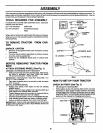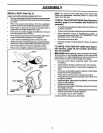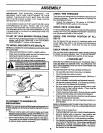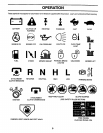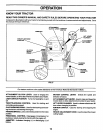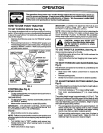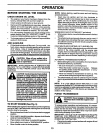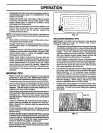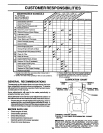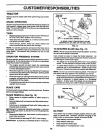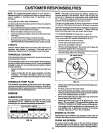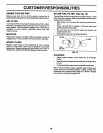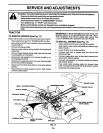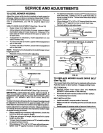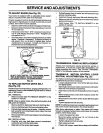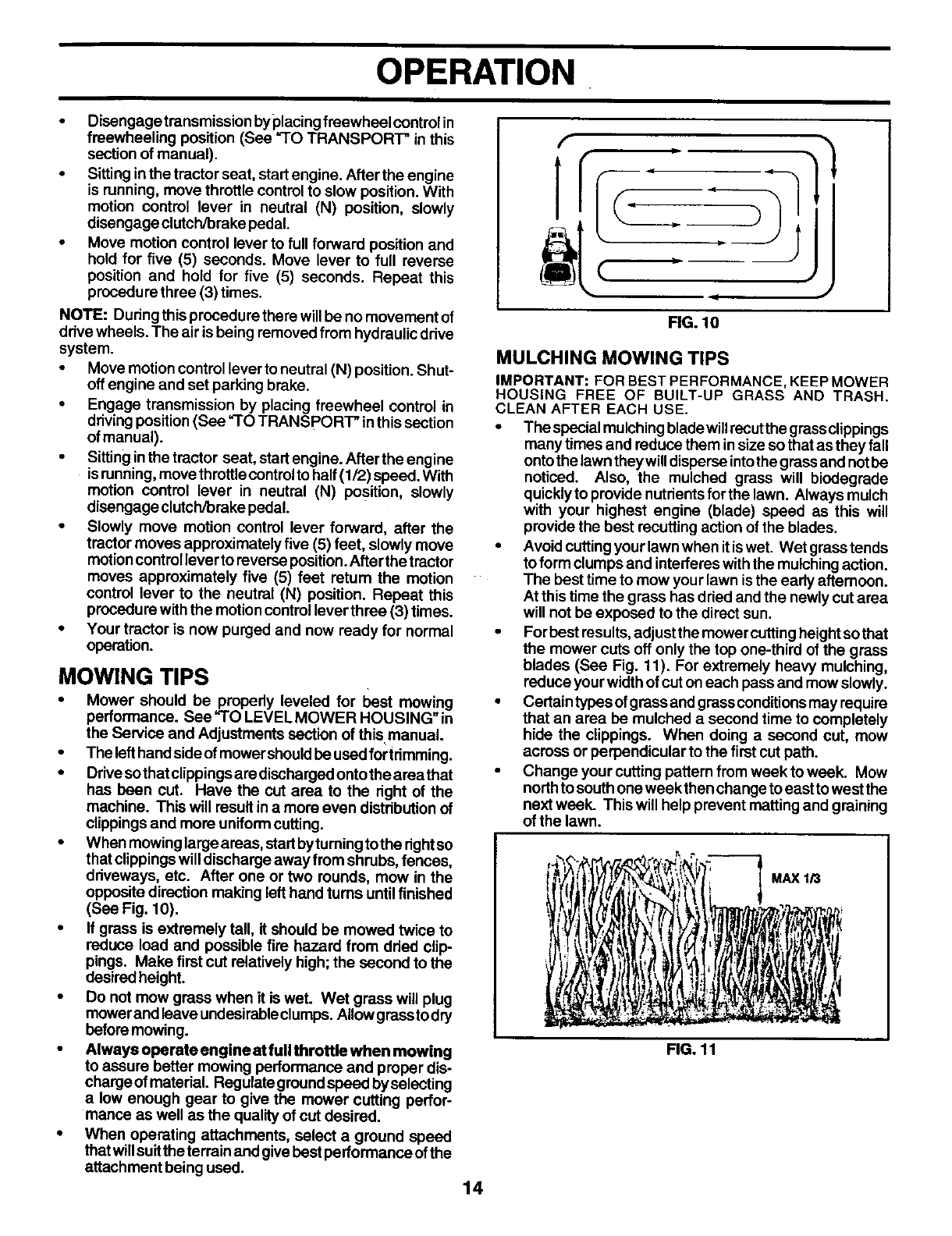
OPERATION
• Disengage transmission byplacing freewheel controlin
freewheeling position (See "TO TRANSPORT" in this
section ofmanual).
• Sitting inthe tractor seat, startengine. After the engine
is running, move throttle controlto slow position.With
motion control lever in neutral (N) position, slowly
disengage clutch/brake pedal.
• Move motion control lever to full forward position and
hold for five (5) seconds. Move lever to full reverse
position and hold for five (5) seconds. Repeat this
procedurethree (3) times.
NOTE: Duringthis procedure there willbe no movement of
drive wheels. The air isbeing removedfrom hydraulic drive
system.
• Move motion controllever toneutral (N) position. Shut-
off engine and set parking brake.
• Engage transmission by placing freewheel control in
drivingposition(See "TO TRANSPORT" inthis section
ofmanual).
• Sittinginthe tractor seat, startengine. Afterthe engine
isrunning,move throttlecontrol tohalf(1/2) speed. With
motion control lever in neutral (N) position, slowly
disengage clutch/brake pedal.
• Slowly move motion control lever forward, after the
tractor moves approximately five (5) feet, slowly move
motioncontrollever toreverse position. Afterthe tractor
moves approximately five (5) feet return the motion
control lever to the neutral (N) position. Repeat this
procedure withthe motioncontrolleverthree (3) times.
• Your tractor is now purged and now ready for normal
operation.
MOWING TIPS
• Mower should be properly leveled for best mowing
performance. See "TO LEVEL MOWER HOUSING" in
the Service and Adjustments section of thismanual.
• The lefthandsideofmower shouldbe used fortrimming.
• Drivesothat clippingsaredischarged ontothe area that
has been cut. Have the cut area to the right of the
machine. This will resultina more even distributionof
clippingsand more uniformcutting.
• When mowing largeareas, start byturningtothe rightso
thatclippingswilldischarge away from shrubs, fences,
driveways, etc. After one or two rounds, mow in the
opposite direction maldng lefthand turns until finished
(See Fig. 10).
• If grass isextremely tall, itshould be mowed twice to
reduce load and possible fire hazard from dried clip-
pings. Make first cut relatively high; the second to the
desiredheight.
• Do not mow grass when if iswet. Wet grass will plug
mowerand leave undesirableclumps. Allowgrasstodry
before mowing.
• Always operate engine atfull throttle when mowing
to assure better mowing performance and proper dis-
charge ofmaterial. Regulate groundspeed byselecting
a low enough gear to give the mower cutting perfor-
mance as well as the quality ofcut desired.
• When operating attachments, select a ground speed
thatwillsuittheterrainand give best performance ofthe
attachment being used.
(
l
(. .-
, J
FIG. 10
MULCHING MOWING TIPS
IMPORTANT: FOR BEST PERFORMANCE, KEEP MOWER
HOUSING FREE OF BUILT-UP GRASS AND TRASH.
CLEAN AFTER EACH USE.
• The specialmulchingbladewillrecutthegrassclippings
many times and reduce them in size sothat as they fall
ontothelawn theywilldisperse intothegPassandnotbe
noticed. Also, the mulched grass will biedegrade
quicklyto provide nutrientsforthe lawn. Always mulch
with your highest engine (blade) speed as this will
provide the best recutting action ofthe blades.
• Avoid cuttingyour lawn whenitiswet. Wet grass tends
toform clumps and interfereswith the mulchingaction.
The best time tomow yourlawn isthe early afternoon.
At thistime the grass has dried and the newly cut area
will not be exposed to the direct sun.
• For best results, adjustthe mowercuttingheightsothat
the mower cuts off only the top one-third of the grass
blades (See Fig. 11). For extremely heavy mulching,
reduce yourwidth ofcuton each passand mow slowly.
• Certain typesofgrassand grassconditionsmay require
that an area be mulched a second time to completely
hide the clippings. When doing a second cut, mow
across or perpendicular to the first cut path.
• Changeyourcuttingpattemfremweektoweek. Mow
northtosouthone week then changetoeast towest the
next week. This will helpprevent mattingand graining
ofthe lawn.
L
d
MAX 1/3
FIG. 11
14



